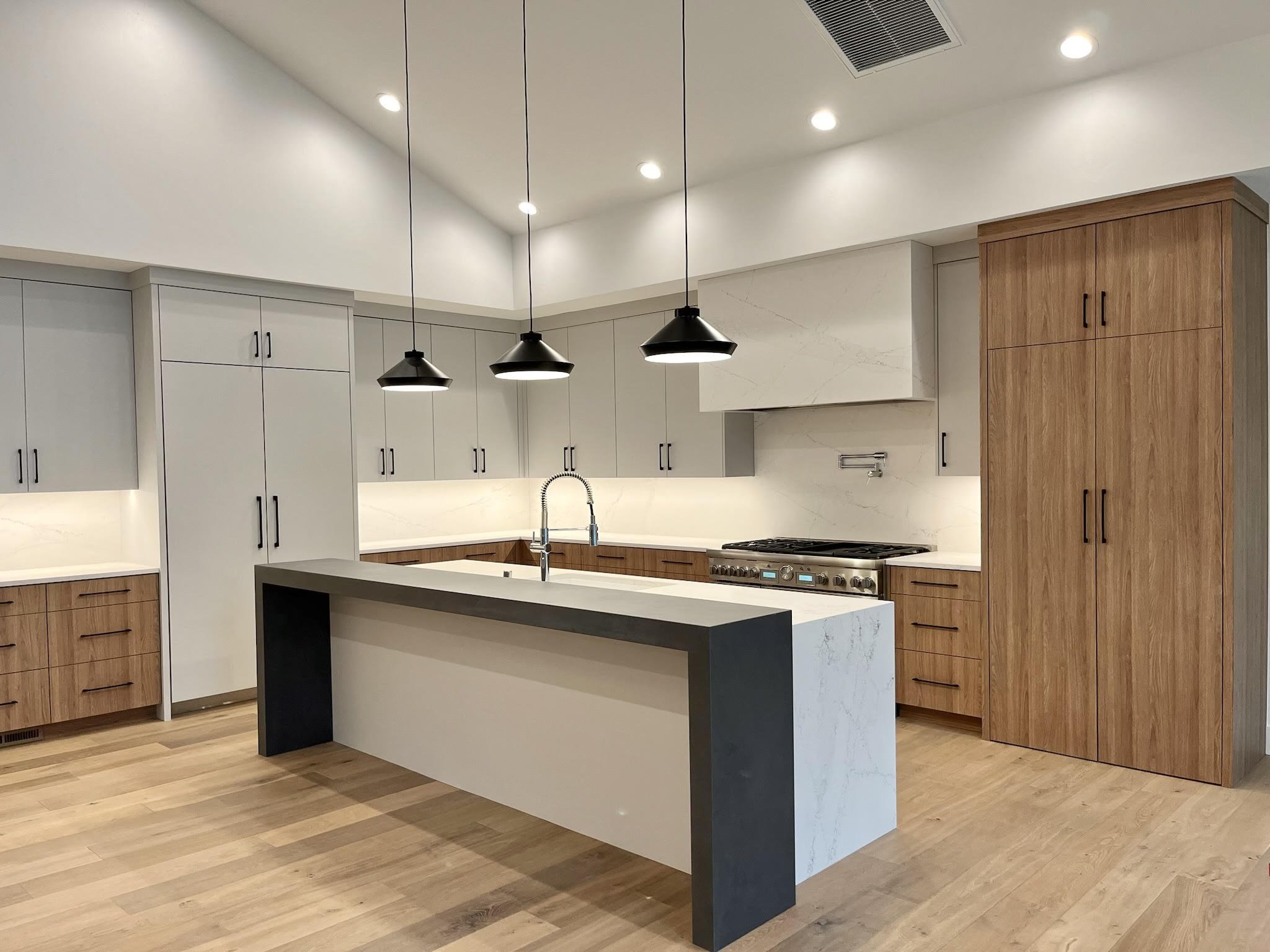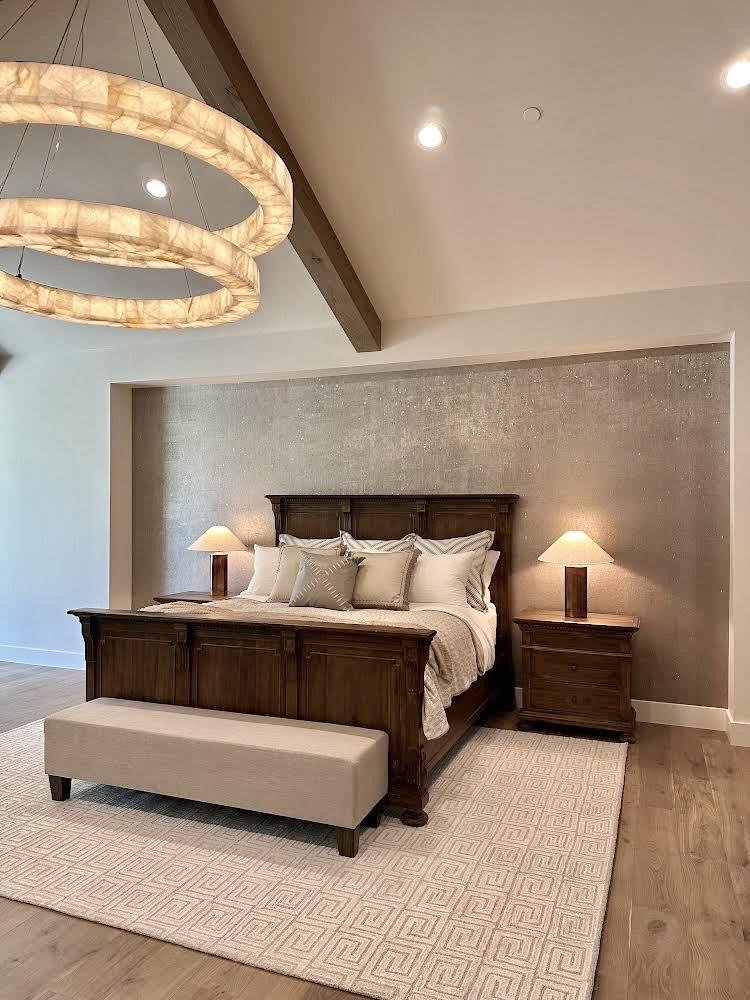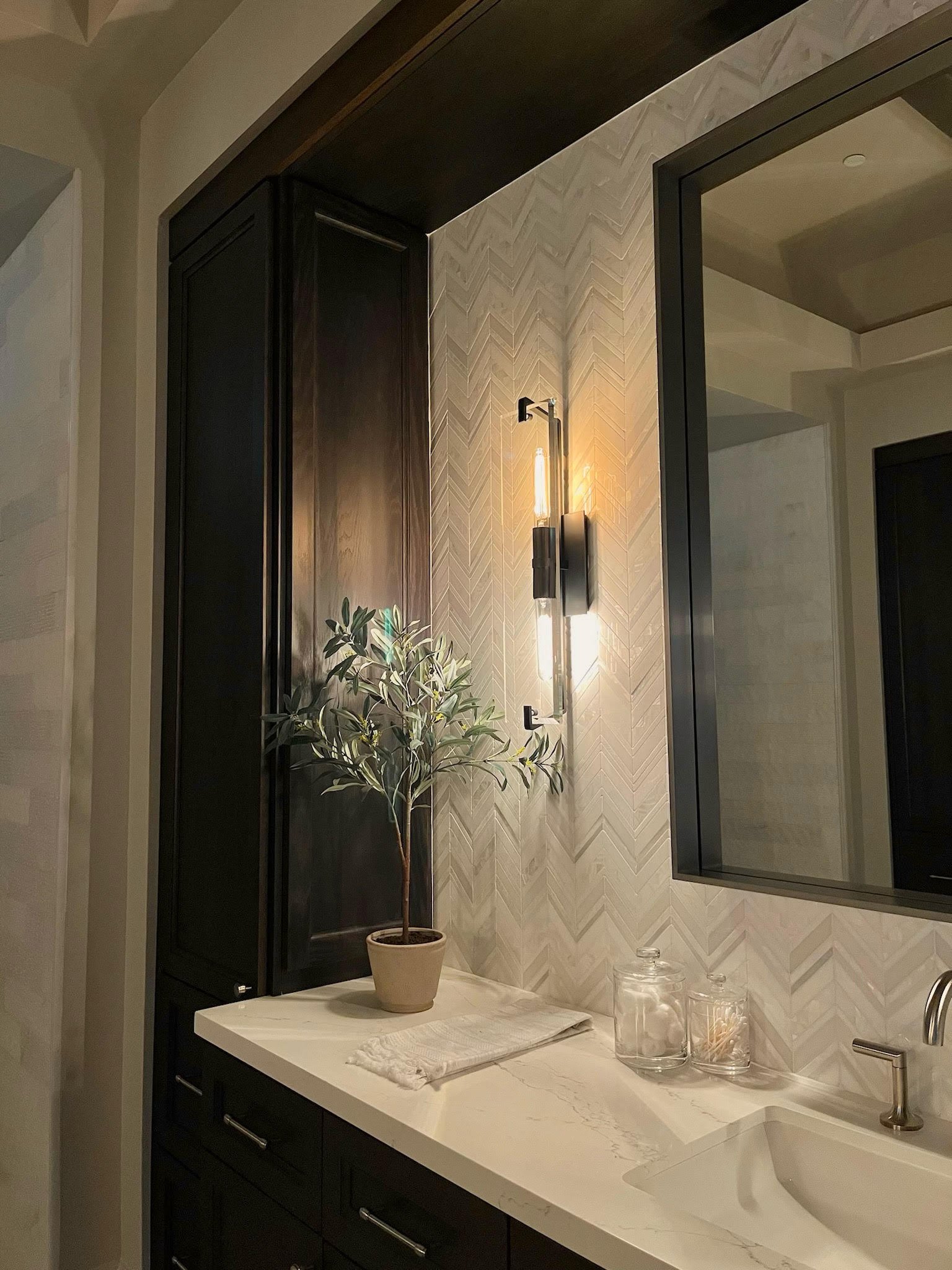When it comes to interior design, few elements have the power to transform a room as dramatically as color and accessories. At Rachel Hills Design Co., we understand that these two aspects of design not only reflect your personal style but also create mood, influence energy, and define the atmosphere of your space. Whether you're redecorating a single room or undertaking a full home transformation, here's how you can use color and accessories to create a stunning, cohesive look.
1. The Psychology of Color: Setting the Right Mood
Color has a profound effect on our emotions and perceptions, which is why choosing the right palette is key to creating the mood you want for your space. Here’s how different colors can influence the atmosphere:
Blues and Greens: Known for their calming and serene qualities, these shades are perfect for spaces meant for relaxation, such as bedrooms or living rooms. Lighter blues and greens promote tranquility, while deeper shades evoke a sense of sophistication and timeless elegance.
Warm Reds, Yellows, and Oranges: These hues energize a room and are ideal for spaces where you want to encourage conversation and activity, such as a dining room or kitchen. They can stimulate creativity and evoke warmth, making your space feel inviting and cozy.
Neutrals: Whites, beiges, and grays are versatile shades that create a clean, minimalist look. They are great backdrops for bolder accessories and furnishings and can make small spaces feel larger and more open.
Purples and Pinks: These colors can add a touch of luxury and creativity to your space. While deep purples are rich and regal, softer pinks can introduce a romantic, soothing atmosphere, perfect for bedrooms or home offices.
Understanding the psychology of color allows you to use it strategically to evoke the right emotions and ambiance in each room of your home.
2. Choosing the Right Color Palette for Your Space
Selecting the perfect color palette involves more than just picking your favorite hues. It’s essential to consider the room’s function, the natural light it receives, and the overall style you're aiming for. At Rachel Hills Design Co., we help our clients make color selections that work cohesively throughout their home.
Start with a Neutral Base: Many design experts recommend starting with neutral tones for larger surfaces like walls, ceilings, and flooring. These create a versatile foundation that allows you to layer in accent colors with accessories, artwork, and furniture.
Add Accent Colors: Once you’ve established your base, add pops of color through accessories such as throw pillows, vases, rugs, and art pieces. This is where you can get creative with bold and contrasting hues, ensuring they complement the overall aesthetic of the room.
Consider Flow Between Rooms: When designing multiple spaces in your home, consider how the colors will flow from room to room. It’s important to create a harmonious transition that maintains a cohesive feel throughout the space.
3. Accessorize to Complete the Look
Accessories are the finishing touches that bring personality and charm to a room. From decorative pillows and throws to artwork, lamps, and even indoor plants, the right accessories can elevate the design of your home. Here’s how to incorporate them effectively:
Layering Textures: Mix different textures to add depth to your design. Combine soft textiles like velvet cushions with sleek metal or wood pieces to create visual interest. Consider textured rugs, woven baskets, and fabric curtains to complement your chosen color palette.
Artwork and Mirrors: Art is a great way to introduce color and personality to your space. Choose pieces that resonate with you and reflect the mood you want to create. Mirrors, especially those with unique frames, can also serve as statement pieces that amplify light and make a room feel more expansive.
Functional Accessories: Don’t forget about functional pieces like lamps, trays, and bookshelves. These elements serve a practical purpose while also contributing to the overall aesthetic. A well-chosen lamp can add ambiance, while a decorative tray can tie together various accessories.
Indoor Plants: Bringing greenery into your home not only introduces color but also helps purify the air and create a sense of tranquility. Choose plants that suit your space’s lighting conditions and complement the rest of your design.
4. Create a Focal Point
Every room needs a focal point—a single element that draws attention and anchors the space. This could be a vibrant piece of art, a bold accent wall, or even a striking piece of furniture. Once you’ve established your focal point, use complementary colors and accessories to enhance it and create visual balance.
For example, in a living room, a large, colorful painting could serve as the room’s focal point, with matching accent pillows or a coordinating rug that echoes the colors of the artwork. In a dining room, a bold light fixture could take center stage, with accessories such as tableware and flowers that highlight its beauty.
5. Personalize Your Space
Your home should tell your story, and the best way to achieve this is by selecting colors and accessories that reflect your personality and lifestyle. Whether you prefer a modern, minimalist aesthetic or a cozy, boho vibe, make sure your accessories feel authentic to you.
Consider heirlooms, family photos, or travel souvenirs that can serve as meaningful additions to your home decor. Personal touches like these will not only enhance the space’s design but also create a more inviting and comfortable environment.
6. Expert Guidance from Rachel Hills Design Co.
At Rachel Hills Design Co., we specialize in helping you create beautiful, functional spaces that reflect your unique style. Whether you’re unsure about which colors to choose or need advice on selecting the right accessories, we provide expert guidance tailored to your specific needs. Our goal is to bring your vision to life and create a space that feels both stylish and personal.
If you’re ready for an award winning design, contact us today to schedule a consultation.











